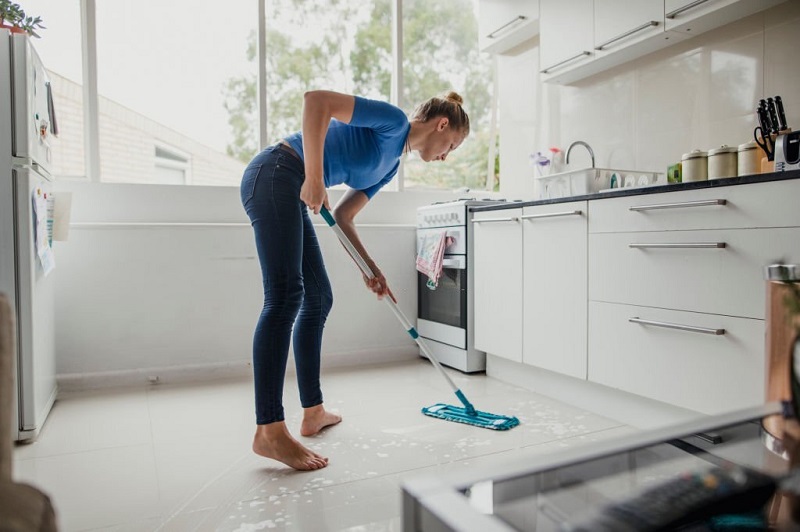It is a never-ending task to maintain the cleanliness of the floors in your home. It doesn’t matter how clean you attempt to keep your home, dirt will find its way in nonetheless, and when it does, mopping is required to force the dirt back out and you may need to increase the frequency of your mopping, especially on the kitchen floor.
When should floors be mopped?
The most regular mopping should be done in high-traffic areas. In the homes of the vast majority of families, the areas that get the greatest foot traffic are the foyer, the kitchen, the bathrooms, and the corridors. You should use a wet mop on a weekly basis in all of the high-traffic areas of your home and full property mopped every other week.
It is not necessary to mop the floors of your home once a week if there are some rooms in your house that are not used very regularly, such as a guest room. It should be adequate to mop the floor every other week or once a month with water and a small amount of floor cleaner.
Exceptions
There are, without a doubt, certain notable exceptions. If you have dogs, you may find that you need to wipe your floors more frequently in order to remove muddy paw prints.
It’s possible that you’ll need to clean up the food debris in your eat-in kitchen if you have many youngsters who use it on a daily basis. In the event that there are any unusual situations, such as these, you should mop as frequently as necessary.
Extend the amount of time spent between moppings
Your mopping schedule should be tailored according to how frequently you need to clean the floor. By going over problem areas with a dry mop on a regular basis, you may lengthen the amount of time that passes before you need to resort to using a wet mop, bucket, and rubber gloves.
These dry mops, which are often wrapped with a microfiber cloth, are used to clean the floors and pick up grit, pet hair, pollen, and other tiny debris. You can put off doing a wet mop until there is a significant spill or buildup of filth if you spend just a few minutes each day doing dry mopping instead.
What are the instructions for mopping your floors?
You will need a sponge or string mop, a bucket, a mild cleaner, rubber gloves, and a nylon scrub pad in order to wet mop your floors when the time comes. Proceed with the following general steps which cleaning experts follow:
- For the collection of larger debris, sweep or vacuum the area in question.
- Before you clean the floor, make sure that any damp spots on the floor, such as muddy footprints that are still wet, are wiped away.
- Put some floor cleaning in a bucket wring of hot water, then fill the rest of the bucket with warm water.
- If you want to avoid walking on surfaces that have just been mopped, it is best to begin at one of the farthest corners of the room and work your way toward the door with a mop head.
- After soaking the mop in the bucket, squeeze as much water out of it as possible. You don’t want to end up with a mop that’s dripping wet. The regions that you mop ought to dry off quite rapidly.
- Make strokes in a back-and-forth motion, starting at the wall and working your way to the room’s center before proceeding towards the door. Double-check each and every place.
- When you come across a scuff mark, remove it by hand using a nylon pad wherever possible. Mop the floor a few times, then rinse the mop in the bucket, squeeze out the excess water, and continue mopping.
- If the water becomes cloudy while you are sweeping, you should switch it out. It is not a good idea to spread more dirt on the floor.
To conclude, you should mop the floor one more time with water that is completely detergent-free and clear to eliminate any cleaning solutions that may still be present on the floor.
Article Source: https://dirt2tidy.com.au/blog/how-often-should-you-mop-the-floors-in-your-house/

